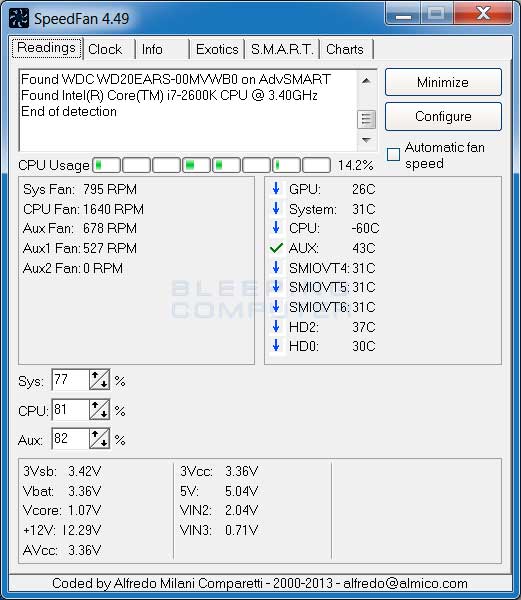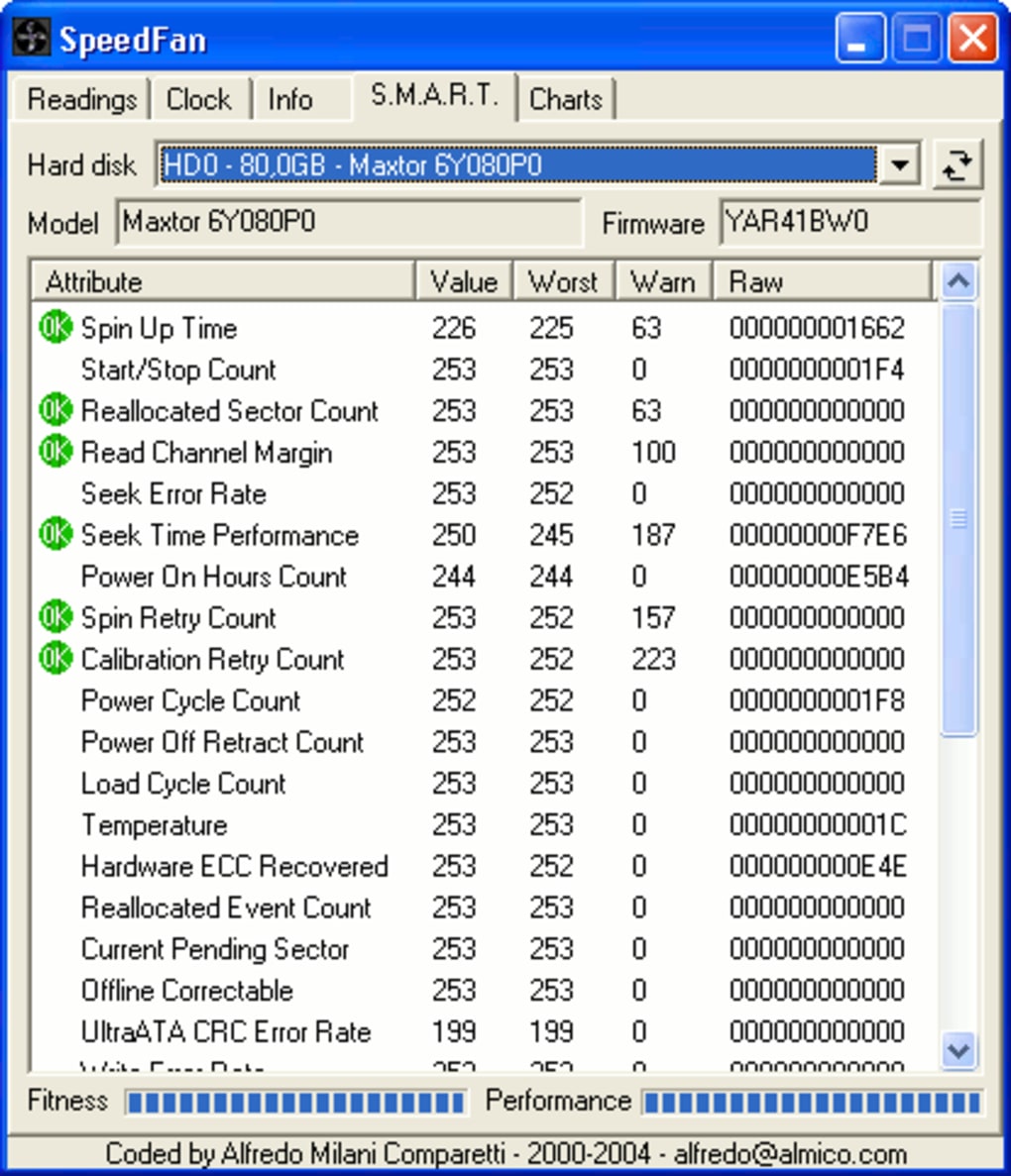
From Fan speed to total voltage, you can view any and all of the current fans.įirst of all, you have to identify which temperature sensor is which. When Speedfan is in an open window, you can see a whole lot more. When minimized, a temperature reading is showed on the button right of the desktop. The main viewing purpose of SpeedFan is to show its user what's going on with their machine. Several minor improvements and bug fixes.SpeedFan is a program that monitors voltages, fan speeds and temperatures in computers with hardware monitor chips. Bugfix for missing network transfer speed display after resume from standby in certain configurations. The fan control profiles are now directly changeable in the fan control page. Implement a new Concept for Settings/Sensor configuration. Make display of network transfer speeds available in Gadget. Tray icon display of fan speeds is now possible. Show more core temperature labels in overview page if applicable (Intel-CPUs). Support for ITE ITE8638 SuperIO monitoring chip (currently read-only). Provide a Data API (beta) for getting Argus Monitor sensor values into third party applications. Better support for multiple monitor setups which use different Windows scaling. Elevated privileges are NOT required anymore to use fan control for Nvidia GPUs with newer driver versions 466.11 and newer! Available temperature types are: Difference, Average, Mean and Maximum. You can generate you own temperature definitions from existing raw (and synthetic) temperatures. Synthetic Temperatures for fan control. Version 6.0.01 brings these changes (see Full Version History): data, though, and probably isn't quite good enough to justify its price It doesn't display all the available S.M.A.R.T. Verdict:Īrgus Monitor does a reasonable job of tracking your system temperatures. And if you find your system is overheating at any time, then the Fan Speed tab allows you to take control over your system and GPU fan speeds, ramping them up until your PC temperatures are back under control. There are some useful system information screens.




And a simple tabbed interface allows you to focus on any one of these attributes, making it easy to (for instance) see if your CPU is overheating when it runs processor-intensive apps.Īn "HD S.M.A.R.T." tab additionally reports on details like spin up time, power cycles, host writes and more (if your hard drive is S.M.A.R.T.-compatible), though not as clearly or completely as we'd like.Ī graph of your CPU core frequency lets you see if your power management plan is working properly. Once installed, launch it, and immediately you should see graphs of your CPU, GPU and hard drive temperatures. Argus Monitor is an interesting system information tool that enables you to keep an eye on your system temperature, fan speeds, hard drive status and many other vital system details.


 0 kommentar(er)
0 kommentar(er)
